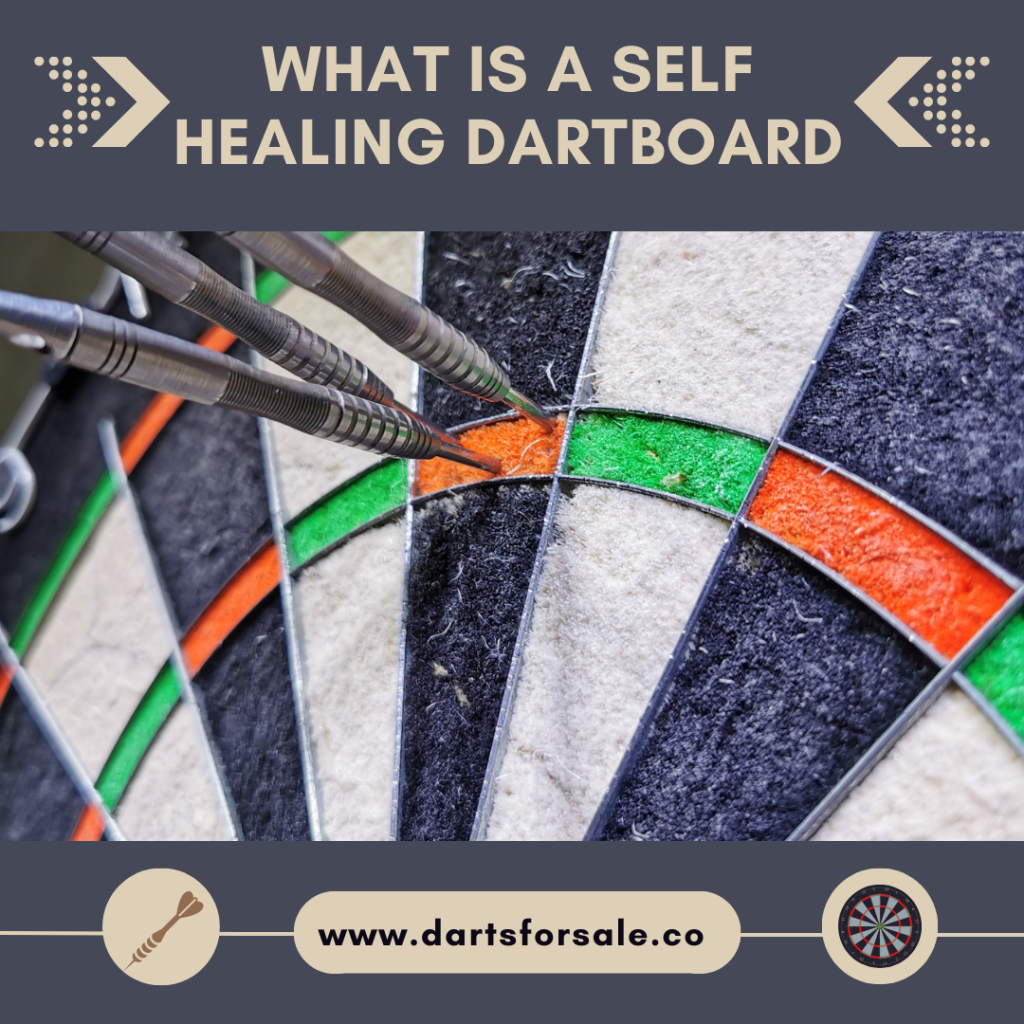Top Self Healing DartBoards
Features of Self Healing DartBoards
- Size: The standard size for a regulation dartboard is 18 inches in diameter and 1.5 inches thick. This ensures that the board meets the official rules and dimensions for tournaments and leagues. However, some dartboards may be slightly smaller or larger depending on your preference and space availability.
- Material: As mentioned earlier, sisal is the most common material for self-healing dartboards. It is strong, resilient, and eco-friendly. However, there are other materials that can also be used, such as paper, cork, or wood. These may be cheaper or easier to find, but they may not last as long or heal as well as sisal.
- Wiring: The wiring on a dartboard is what separates the scoring segments and creates the bullseye and doubles and triples rings. The quality and thickness of the wiring can affect how often your darts bounce off or stick to the board. Thin wiring reduces bounce-outs and increases scoring potential. Some dartboards use blade wiring, which has an angled edge that deflects darts into the board instead of out.
- Mounting: The mounting system on a dartboard determines how easy it is to install and adjust on your wall or stand. Some dartboards come with brackets, screws, or hooks that allow you to hang them securely. Others have rotating numbers or movable rings that let you change the orientation of the board to even out wear and tear.
- Accessories: Some dartboards come with extra accessories that enhance your playing experience. These may include darts, flights, shafts, cases, scoreboards, cabinets, lights, or mats. These accessories may vary in quality and quantity depending on the brand and price of the dartboard.
Pros And Cons of Self Healing DartBoards
Here are some of the pros and cons of self-healing dartboards:
Pros
- They last longer than other types of dartboards because they can heal themselves from dart holes.
- They look better than other types of dartboards because they maintain their smooth surface and color.
- They perform better than other types of dartboards because they reduce bounce-outs and increase scoring accuracy.
- They are more eco-friendly than other types of dartboards because they are made of natural materials that are biodegradable.
Cons
- They may be more expensive than other types of dartboards because they use high-quality materials and technology.
- They may require more maintenance than other types of dartboards because they need to be cleaned regularly to prevent dust buildup.
- They may not be compatible with all types of darts because some darts may be too soft or too hard for them.
Tips And Tricks
- Rotate your board regularly to even out wear and tear on different segments.
- Use steel tip darts with sharp points to penetrate the board easily without damaging it.
- Avoid using soft-tip darts or plastic darts as they may not stick well or damage the board.
- Clean your board regularly with a damp cloth or a brush to remove dust and dirt.
- Avoid exposing your board to direct sunlight or extreme temperatures as they may fade or warp it
- Store your board in a dry and cool place when not in use to prevent mold and moisture.
- Use a dart mat or protective backing to protect your floor or wall from stray darts.
Buyer’s Guide
Here are some factors to consider when buying a self-healing dartboard:
Budget
How much are you willing to spend on a dartboard? Self-healing dartboards can range from $20 to $100 or more depending on the brand, quality, and features. You should set a realistic budget that matches your needs and expectations.
Purpose
What are you going to use the dartboard for? Are you playing for fun or for competition? Are you playing alone or with others? Are you playing indoors or outdoors? These questions can help you determine the size, material, and accessories of the dartboard that suit your purpose.
Space
How much space do you have for the dartboard? Do you have a dedicated room or a corner for it? Do you have enough clearance and lighting for it? These questions can help you choose the mounting system and the accessories of the dartboard that fit your space.
Reviews
What do other customers say about the dartboard? Are they satisfied with its quality and performance? Are there any complaints or issues with it? These questions can help you evaluate the reputation and reliability of the dartboard and the seller.
Conclusion
FAQ
The most common material for self-healing dartboards is sisal, a natural fiber that is tightly compressed into a circular shape.
The benefit of thin wiring on a dartboard is that it reduces bounce-outs and increases scoring potential by creating more surface area for the darts to land.
The standard size for a regulation dartboard is 18 inches in diameter and 1.5 inches thick. This ensures that the board meets the official rules and dimensions for tournaments and leagues.
The difference between the Blade 5 and the Blade 5 Dual Core dartboards is that the Blade 5 Dual Core has two layers of sisal: one softer layer on top and one harder layer at the bottom. This creates more compression on the surface and reduces surface resistance, resulting in fewer bounce-outs and more durability.
Some accessories that may come with a dartboard are darts, flights, shafts, cases, scoreboards, cabinets, lights, or mats. These accessories may vary in quality and quantity depending on the brand and price of the dartboard.










